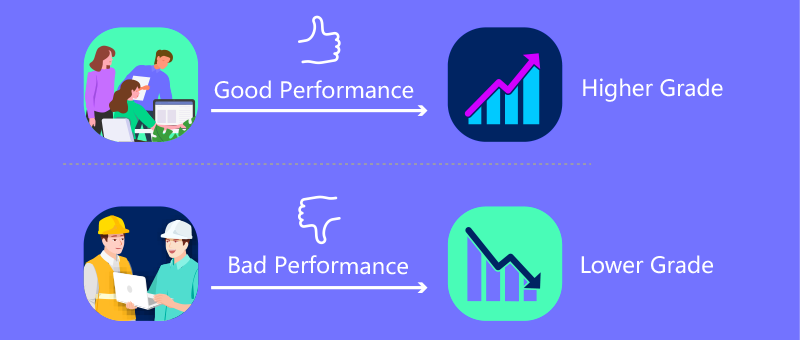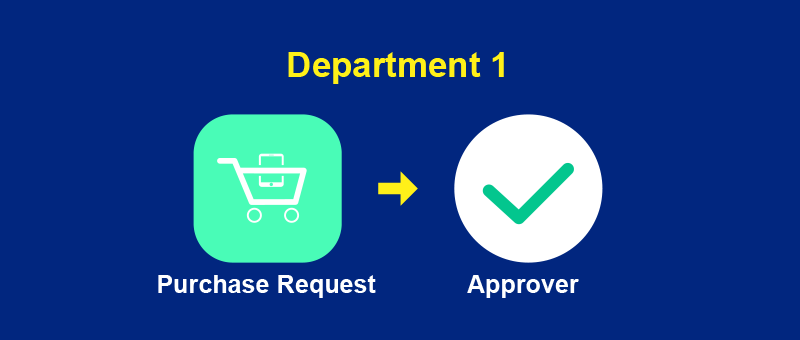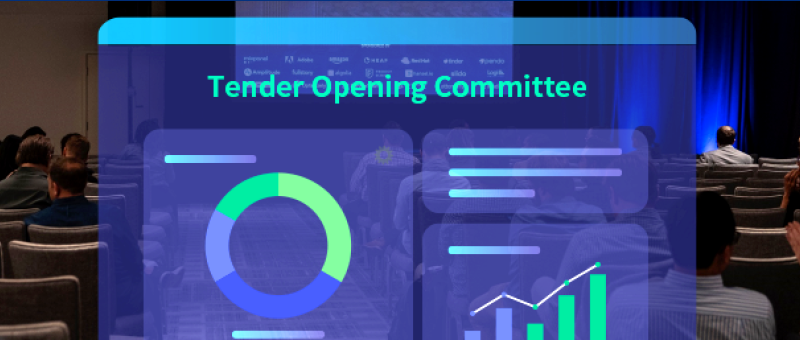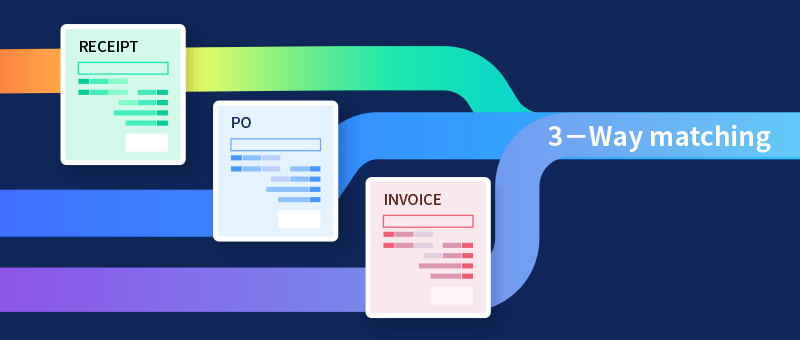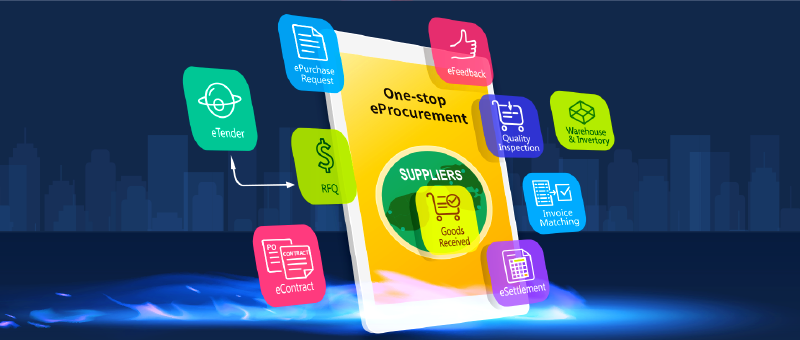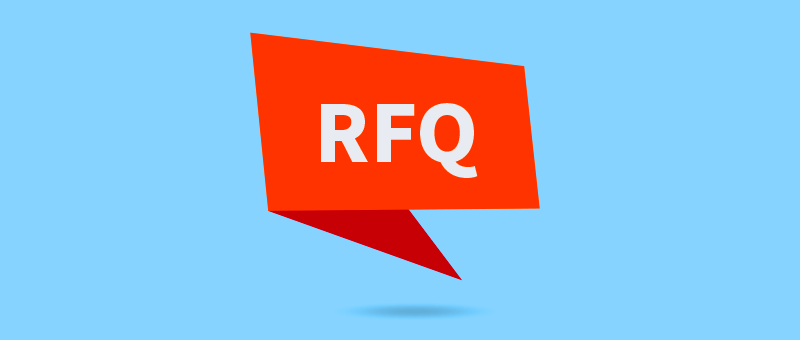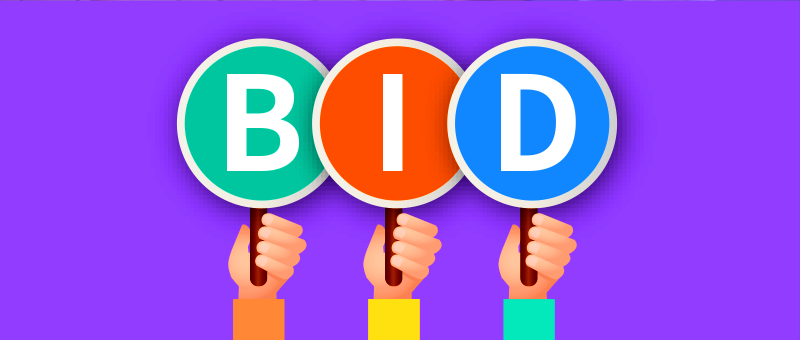
-
Multi-subsidiary Procurement

 SRM supports a parent company to manage both centralized and decentralized procurement together with its subsidiaries. The parent company can choose one of the following roles for its multi-subsidiary procurement management:
SRM supports a parent company to manage both centralized and decentralized procurement together with its subsidiaries. The parent company can choose one of the following roles for its multi-subsidiary procurement management:
- Monitoring
- Rule control and monitoring
- Budget control, rule control and monitoring
- Budget control, rule control and partially centralized procurement
- Budget control, rule control and all centralized procurement
Group Organization Structure
 SRM allows the parent company to define the organizational structure of the group in multiple levels. For example,
SRM allows the parent company to define the organizational structure of the group in multiple levels. For example,

Each organization will have its own currency, calendar, announcement, budget & expenditure, supplier, purchase catalog, purchase demand, purchase request, quick quote, tender, auction, purchase order, procurement contract, expense report, warehouse & inventory, invoice from supplier, account payable, fixed assets and reports information. Each organization will also have its own approval flows or inherit approval flows from its parent for the types of items mentioned above.
Global and Local Policies & Rules
 SRM allows setting global policies and rules that every organization must comply with and local policies and rules that a subsidiary or a group of subsidiaries must comply with.
SRM allows setting global policies and rules that every organization must comply with and local policies and rules that a subsidiary or a group of subsidiaries must comply with.
Global and Local Budget Control
 SRM allows setting of global budget and control for the entire group and local budget and control for each subsidiary. Budget can be allocated from a parent company to its subsidiaries or divisions and actual cost can be aggregated up from subsidiaries to a parent. The budget allocation and actual aggregation can be done at each level within the group organization structure.
SRM allows setting of global budget and control for the entire group and local budget and control for each subsidiary. Budget can be allocated from a parent company to its subsidiaries or divisions and actual cost can be aggregated up from subsidiaries to a parent. The budget allocation and actual aggregation can be done at each level within the group organization structure.
Manage Spend Across Subsidiaries
Without
 SRM, managing spend across subsidiaries, the user must log out of one subsidiary’s system before logging into another, complicating even simple activities like purchase order entry or payment request. When an invoice, for example, contains charges that belong to more than one subsidiary, the user needs to separate the charges manually and then log in and out of each subsidiary’s system to enter that subsidiary’s share of the cost.
SRM, managing spend across subsidiaries, the user must log out of one subsidiary’s system before logging into another, complicating even simple activities like purchase order entry or payment request. When an invoice, for example, contains charges that belong to more than one subsidiary, the user needs to separate the charges manually and then log in and out of each subsidiary’s system to enter that subsidiary’s share of the cost.
Having only
 SRM for viewing, entering, and searching for spend information across your subsidiaries would allow, for example, your finance team at corporate headquarters to view open purchase orders for different subsidiaries.
SRM for viewing, entering, and searching for spend information across your subsidiaries would allow, for example, your finance team at corporate headquarters to view open purchase orders for different subsidiaries.  SRM enables your employees in different locations and on different mobile and laptop devices to use the same solution to submit, review, approve, and search for transactions.
SRM enables your employees in different locations and on different mobile and laptop devices to use the same solution to submit, review, approve, and search for transactions.
Allocate Spending Without Hassle
For a multi-subsidiary group, it can be a hassle to allocate expenses from one entity to the other, such as from the parent company to one of its subsidiaries. Too often this means relying on spreadsheets and manually managing eliminations to get the “due to” and “due from” right in each company.
 SRM allows the user to allocate the amount on a purchase order, procurement contract or an expense report from one entity to another on the transaction line level eliminating the need for spreadsheets and ensuring that financial reports are up-to-date and accurate.
SRM allows the user to allocate the amount on a purchase order, procurement contract or an expense report from one entity to another on the transaction line level eliminating the need for spreadsheets and ensuring that financial reports are up-to-date and accurate.
Eliminate Duplicate Data Entry
It’s not uncommon for two or more companies (such as parent and subsidiary companies or sibling subsidiary companies) to share the same vendors, items and even chart of accounts — but too often this requires a great deal of duplicate data entry to set up and maintain the data across multiple companies. A new vendor or an address change means someone will need to update the vendor record in each company that buys from that vendor. It’s inefficient and often simply doesn’t get done, leaving users to question which database is believable.
 SRM allows shared setup — vendors, items etc. can be set up once used by the companies that have the access rights. And when the inevitable information changes come, or a new vendor is added, the data only needs to be entered in a single location.
SRM allows shared setup — vendors, items etc. can be set up once used by the companies that have the access rights. And when the inevitable information changes come, or a new vendor is added, the data only needs to be entered in a single location.
Consolidate Buying Power
Multiple subsidiaries that lack a centralized procurement function are likely overspending. Each entity ends up sourcing and purchasing direct expense items from separate vendors, or perhaps even from the same vendor but under multiple accounts.
Centralizing purchasing through
 SRM will increase buying power, improve positioning with vendors, and better communications across all entities. With all direct and indirect spending routed through
SRM will increase buying power, improve positioning with vendors, and better communications across all entities. With all direct and indirect spending routed through  SRM, you can leverage your buying power, minimize waste, and drive efficiency into the process.
SRM, you can leverage your buying power, minimize waste, and drive efficiency into the process.
Centralize Through Decentralizing
The benefits of centralizing the procurement process are significant, but sometimes it makes sense to decentralize some portions of the procurement process, like requisition requests.
Empowering users to create and submit their own requisitions frees your accounting staff and purchasing agents to focus on more value-added tasks, but if the result is multiple, often redundant purchase orders, then the benefits of centralized purchasing and consolidated buying power could be diminished.
 SRM provides the best of both worlds: decentralized, employee-facing requisition functions along with centralized purchasing. Multiple requisitions can be combined into a single purchase order to maximize buying power and efficiencies.
SRM provides the best of both worlds: decentralized, employee-facing requisition functions along with centralized purchasing. Multiple requisitions can be combined into a single purchase order to maximize buying power and efficiencies.






















